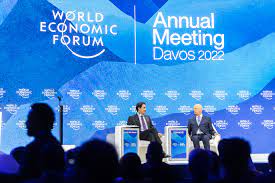Leading development economist, Prof Ken Ife has traced the exit of the Nigerian economy from recession to the resolve of the federal government to look inwards in sourcing solution than engaging in borrowing spree.
Speaking in an interview, he said though the best way to fight recession is to boost liquidity by boosting productivity; Nigeria was able to exit early because much of the funds used within the period were not borrowed but revenues.
He said if Nigeria had borrowed, the scare of the interest rate would have delayed the second quarter exit.
Already, the Debt Management Office (DMO) has come out to say Nigeria is very close to its borrowing limit of $22bn.
This was made public in the agency’s ‘Determination of Borrowing Limit for 2017’ report, released recently.
According to the report, the Federal Government could borrow up to 5.89 per cent of the country’s Gross Domestic Product (GDP) estimated at $374.95bn.
DMO in the report showed that the country’s new debt management strategy entails balancing the sources of debt to ensure that more resources are borrowed from external sources where the interest rate is lower than interest on funds from domestic sources.
The nation’s total debt stood at N19.16tn as of March 31, 2017. Segmenting the components of the national debt, the DMO put the Federal Government’s domestic debt at N11.97tn. The domestic debt component of the states stood at N2.96tn as of March 31.The external debt component for both the federal and the state governments stood at $13.81bn.
The new report noted that “The determination of the borrowing limit in 2017 was guided by the government’s conservative debt management strategy of using the country-specific threshold of 19.39 per cent for present value of total public debt-to-Gross Domestic Product ratio in the medium term, as against the country’s international peer group threshold of 56 per cent to measure its debt sustainability”.
“The end-period NPV of total public debt to GDP ratio for the Federal Government was projected at 13.5 per cent. Given the country-specific ratio of 19.39 per cent for net present value of total public debt to GDP ratio (up to 2017), the borrowing space was 5.89 per cent of the estimated GDP of $374.95bn for 2017.
“To this end, the maximum amount that could be borrowed (domestic and external) by the Federal Government in 2017 without violating the country-specific threshold would be $22.08bn (i.e. 5.89 per cent of $374.95bn).”
Explaining more on debt rebalancing, the DMO said, “The Debt Management Strategy, 2016 – 2019, provides the rebalancing of the debt portfolio from its composition of 84.16 as at end-December 2019 for domestic and external debts, respectively”.
“It supports the use of more external finance for funding capital projects, in line with the focus of the present administration on speeding up infrastructural development in the country, by substituting the relatively expensive domestic borrowing in favour of cheaper external financing,” the DMO report argued.









